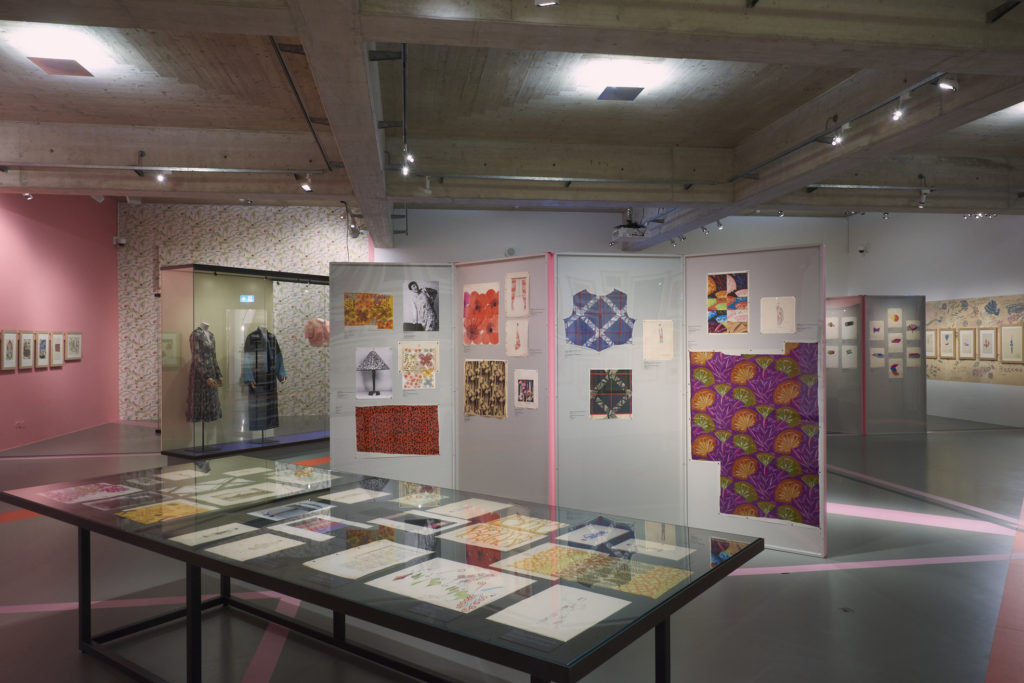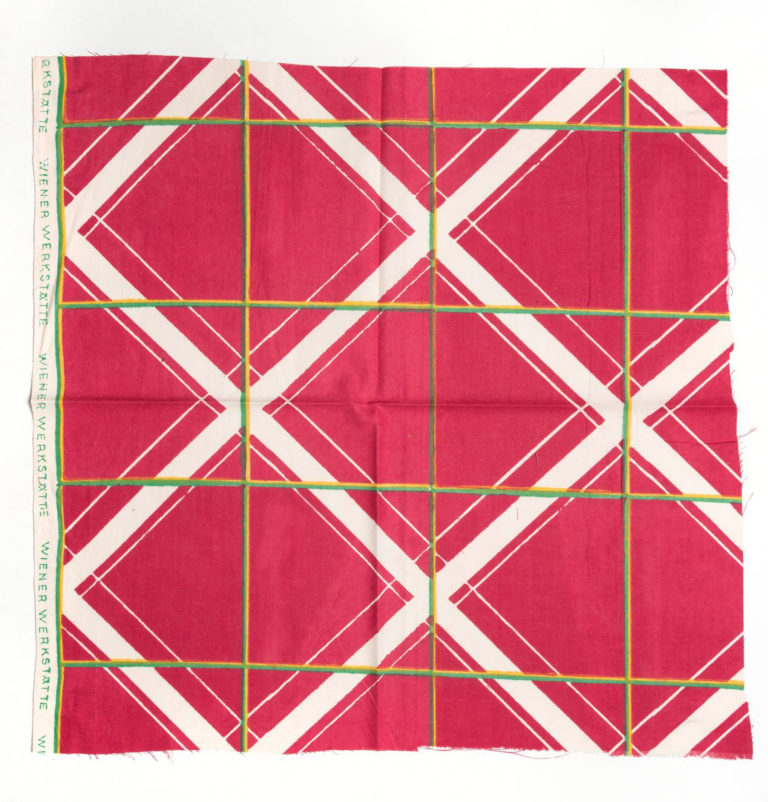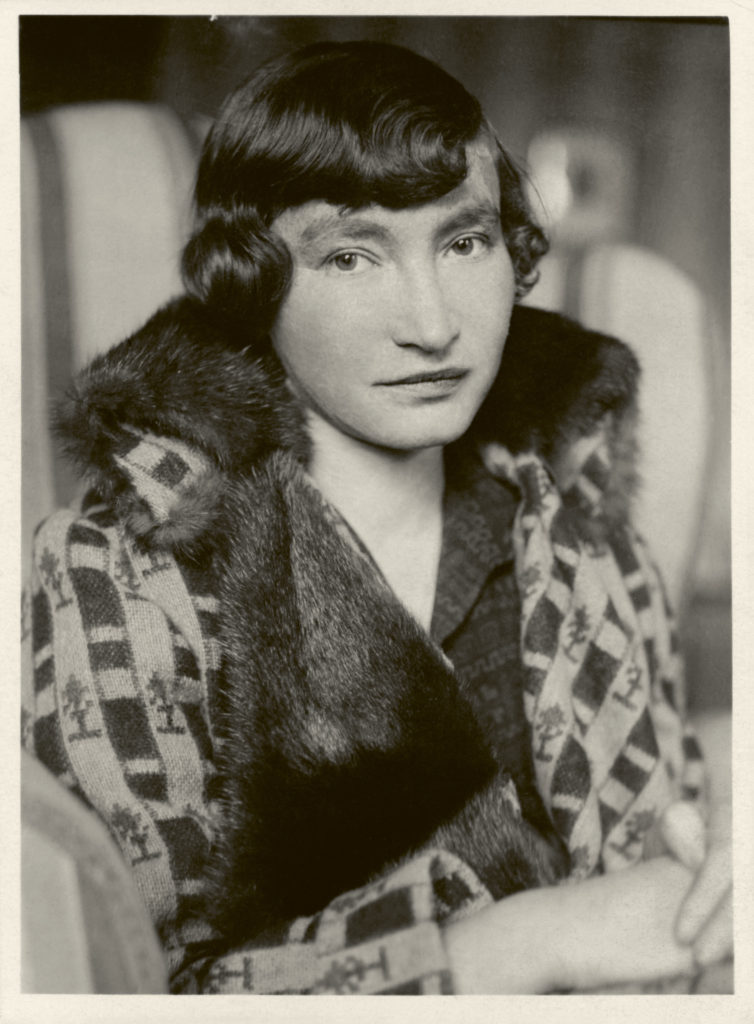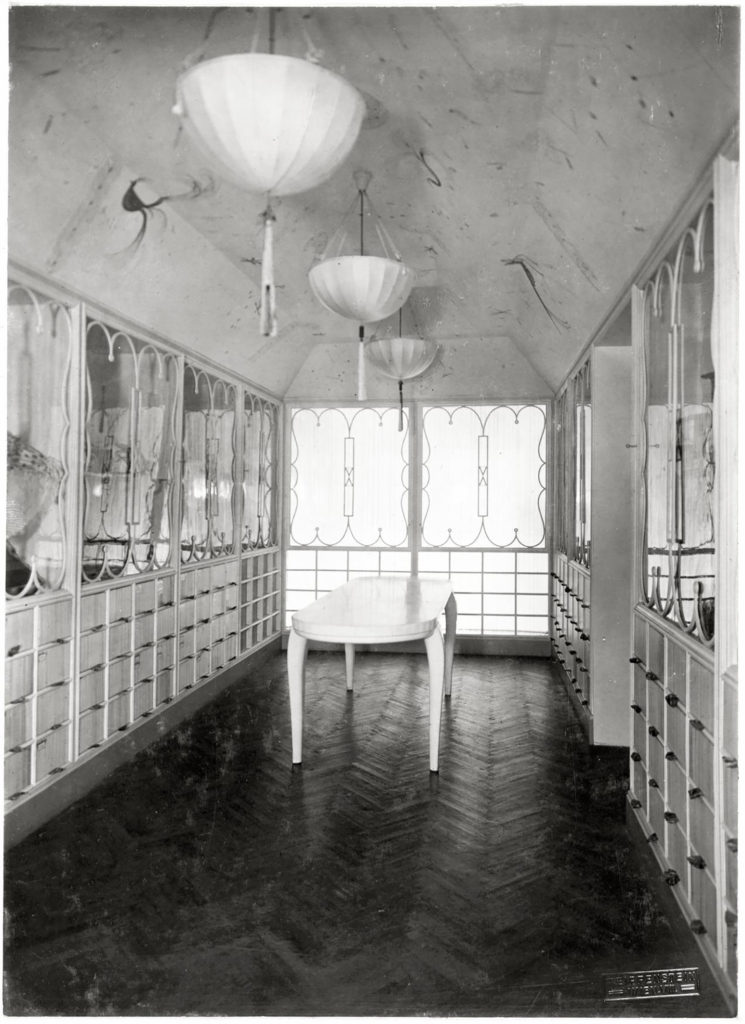Stars, feathers, tassels.
Felice Rix-Ueno at the Museum of Applied Arts (MAK) in Vienna.
Valeria Kršiaková
The Vienna Museum für Angewandte Kunst (MAK) has recently launched a solo exhibition in honor of Felice Rix-Ueno (1893-1967), one of the designers we discussed in Creativity from Vienna to the World’s lectures and podcasts. The exhibition is curated by one of the speakers at the online symposium, Anne-Katrin Rossberg, curator at the MAK, and provides captivating insights into the extraordinary oeuvre of a female designer who made a significant contribution to the renowned Wiener Werkstätte design company. After years of working in Vienna, Felice Rix emigrated to Japan in the 1930s with her husband, architect Isaburo-Ueno. There, she combined her unparalleled playful art style with traditional Japanese expression and started teaching at Kyoto City College of Fine Arts. Despite the distance, she kept in touch with her former colleagues from Vienna over the years.
The exhibition at the MAK showcases numerous objects, mainly from Felice Rix-Ueno’s time in Vienna, and presents a diverse range of her designs, including fabric patterns, interiors, jewellery, and graphic artworks. In addition to her work, the exhibition also features ceramics created by her sister Kitty Rix, as well as sketches by Maria Likarz, who often incorporated Felice Rix-Ueno’s fabrics into her fashion designs.

The early career
At the exhibition, visitors can view some of Rix’s early works, including her “War Glass”, which was made in 1915. Rix’s distinctive and unconventional personal style can already be observed in these initial works. Unlike her contemporary, Mathilde Flögl, who depicted soldiers, Rix used designs featuring numbers that spell out years and the colors of the Austro-Hungarian Monarchy – black and yellow – to express patriotism. She also embraced stars, which were a favorite motif of hers at the time. Additionally, she produced memorable graphic designs during this period. The exhibition showcases her hand-colored linocuts on washi from the portfolio Mode Wien 1914/15 (Vienna Fashion 1914/15) and also sheets from the portfolio Das Leben einer Dame Wien 1916 (The Life of a Lady, Vienna 1916). The influence of Japanese art can be clearly seen even in these early illustrations, with their simple composition, elementary forms, and blank spaces.

Fabric Designs: From Archibald to Fuchsie
A significant part of the exhibition is dedicated to Rix’s vibrant fabric designs. These colourful designs are displayed on paper, covering almost an entire wall, while fabric samples are distributed throughout the exhibition room and attached to fake partitions that resemble byōbu , traditional Japanese folder screens. Rix created a total of 112 fabric patterns for the Wiener Werkstätte, which were made for woodblock engravers. As in her other designs, she employed simple structures even on her fabric patterns. Stripes, checks, and diamond shapes notably feature in her early creations. One such example is the so-called “Archibald “(1913-1917), a fabric that offers a variation on the classic tartan pattern.
As indicated above, Rix’s interest in Japanese aesthetics was not coincidental. At the beginning of the twentieth century, many modern artists in Vienna were fascinated by Japanese art production. Rix’s teacher, Josef Hoffmann, utilized Japanese pieces as teaching aids in his courses, which influenced his students’ creations. Rix’s fondness for traditional Japanese textile stencils, known as katagami, seem to have had the most significant impact on her fabric designs. These stencils were readily available in the archives of the former Austrian Museum of Art and Industry in Vienna and were commonly used as visual aids by students at the Kunstgewerbeschule. The dense, repetitive patterns and the use of particular motifs, such as flowers and stylized ornaments in vivid colors inspired by katagami are evident in designs such as “Fuchsia” (1930), “Garden Bouquet” (1924), or “Poppy” (1929).
The exhibition also traces how Rix’s patterns were transformed into final products by her fellow designers in Wiener Werkstätte. For example, Maria Likarz used “Archibald” to create a costume, while an unknown artist turned the pattern “Fuschia” into a dress. It’s worth noting that Josef Hoffman himself used Rix’s design “Web” (1925) to create an interior lampshade. Besides the artworks made by her colleagues from Wiener Werkstätte, the exhibition also showcases ceramic works made by her younger sister, Kitty. Her fondness for animal depiction and naivety is evident in both small sculptures and practical ceramics: cats carry pots for cacti, and fish bear dishes for salt and pepper.


And what about Japan?
The exhibition does an excellent job of showcasing the designs and artworks created by Felice Rix-Ueno in Vienna before the Second World War. However, it falls short in representing her later career in Japan, where she continued to work until she passed away in 1967. The projects she conducted in Japan are present only in the section of interior designs alongside her early Viennese designs. One such early example is the wall painting for the Wiener Werkstätte salesroom for ribbons and lace. However, there are only a few photographs of her interior designs co-created in Japan. One such example is the Star Bar in Kyoto, which was designed by Felice Rix and her husband Isburo Ueno under the name of their Ueno Architectural Studio. Isaburo was responsible for the architectural side of projects, while Felice Rix managed the arts and crafts aspect. The Star Bar was based on standard, simple modernist architectural principles, but the colorful interior decorations were very much in the style of the Wiener Werkstätte retail store, where Felice Rix had previously painted the ceiling.
At the exhibition, you can observe a photo reproduction of a folding screen adorned with birds, flowers, and trees from 1935. According to Japanese design historian Yuko Ikeda, this work indicates that Felice Rix was familiar with traditional Japanese painting at that time. Another example of her later work showcased at the exhibition is the Actress Restaurant’s wall decoration (1963) in Tokyo. Architect Togo Murano requested Felice Rix-Ueno to produce decorative panels on Japanese paper using the traditional Japanese glueing technique called fukurobari to be attached to the concrete wall. The wall decoration featured brightly colored flowers on the gleaming silver walls and ceiling.
In Felice Rix-Ueno’s later works, one can observe a remarkable amalgamation of her Viennese experience with specifically Japanese form and material. She blended her colorful and joyful repertoire of stylistic forms, which she developed during her time in the Wiener Werkstätte, with experiments using traditional Japanese techniques. This approach was also encouraged by the Westernization of Japanese arts and crafts production in the early 20th century. Felice Rix-Ueno was employed at the Gunma Prefectural Crafts Centre and later at the Textile Research Institute in Kyoto, where she was tasked with designing items for both export and domestic consumption. Here, she was encouraged to incorporate Westernized elements into interior decoration and fabric design while also seeking distinctive Japanese design solutions. In this context, Rix’s work stands out as an extraordinary and innovative response to the challenges posed by the tides of cultural change.


One of many
The exhibition offers an intriguing insight into the artwork of Felice Rix-Ueno, created during her studies at Kunstgewerbeschule and for the Wiener Werkstätte. It showcases numerous objects, sketches, and artworks dating back to the 1920s and 1930s. These were seamlessly integrated into the context of Wiener Werkstätte production by displaying works of Rix’s colleagues alongside them. The exhibition dedicated to Felice Rix-Ueno is part of the Viennese Museum of Applied Arts’ effort to present lesser-known Viennese modernist artists and designers. It is noteworthy, however, that the exhibition does not encompass many of Felice Rix’s later works from Japan, which could be because they are being exhibited directly in Japan due to the estate she left there. Nonetheless, the exhibition remains a remarkable showcase of Rix’s early works and must-see for anyone interested in Viennese modernism.

